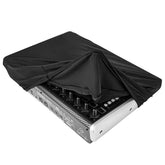How to Tune a Guitar: A Professional Musician's Guide
by
linzz
01 Aug 2024
1. Why is Tuning Important?
Tuning is not just about making the guitar sound right; it also affects the performance and overall musical experience. Proper tuning ensures that chords and scales are in tune, making your music more engaging and pleasing to the ear.
2. Tools for Tuning
- Electronic Tuners: The most common and convenient tool for tuning. Electronic tuners can precisely display the pitch of each string and are suitable for use in any environment.
- Tuning Forks and Pitch Pipes: Traditional tuning tools that require a good ear to match the pitch. These are great for musicians who want to develop their ear training.
- Mobile Apps: Modern smartphones offer a variety of tuning apps, providing a quick and easy way to tune your guitar anytime, anywhere.
3. Standard Tuning Method
The standard tuning (EADGBE) is the most widely used tuning method. Here's how to tune each string:
- Low E string (6th string): Start by tuning the low E string using a tuner or tuning fork.
- A string (5th string): Press the 5th fret of the low E string and tune the A string to the same pitch.
- D string (4th string): Press the 5th fret of the A string and tune the D string to the same pitch.
- G string (3rd string): Press the 5th fret of the D string and tune the G string to the same pitch.
- B string (2nd string): Press the 4th fret of the G string and tune the B string to the same pitch.
- High E string (1st string): Press the 5th fret of the B string and tune the high E string to the same pitch.
4. Common Tuning Issues and Solutions
- String Tension Changes: New strings or changes in environment can cause tuning to drift. It's advisable to check and adjust tuning before playing.
- Ear Fatigue: Prolonged tuning sessions can lead to ear fatigue, making it harder to judge pitch. Taking a break or using an electronic tuner can help.
- String Aging: Old strings may not hold tune well, so regular string changes are recommended.
5. Advanced Tuning Techniques
- Fine Tuning: For seasoned musicians, fine-tuning can further optimize pitch, especially during recording or performance.
- Alternative Tunings: In addition to standard tuning, there are alternative tunings like Drop D, Open G, etc., which can offer different sound textures and creative possibilities.
Conclusion
Tuning is a fundamental yet crucial skill that affects every guitarist's performance quality. Whether you use an electronic tuner, traditional tools, or mobile apps, patience and attention to detail are key. We hope this blog helps you master tuning techniques and improve your playing.







